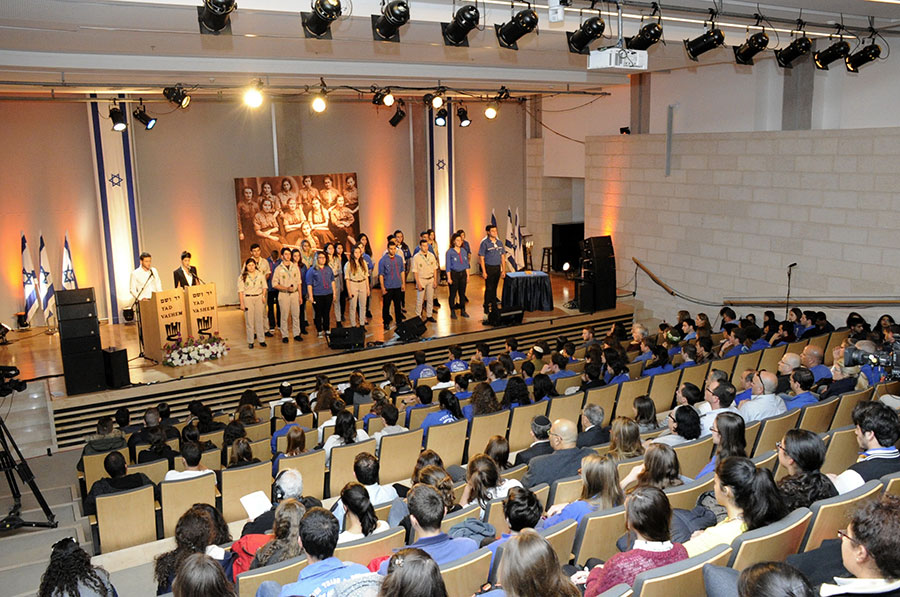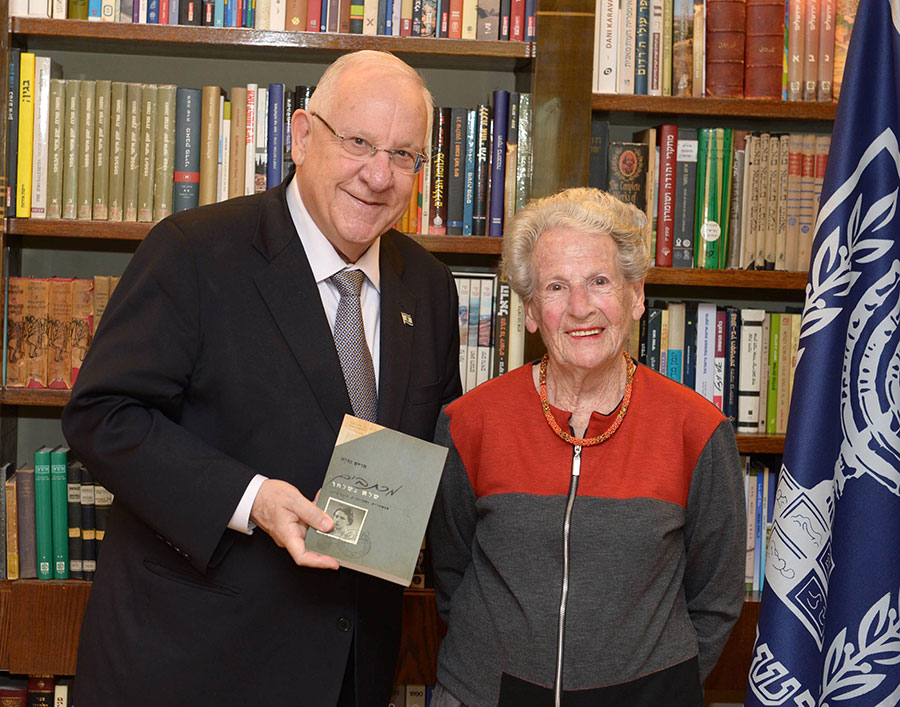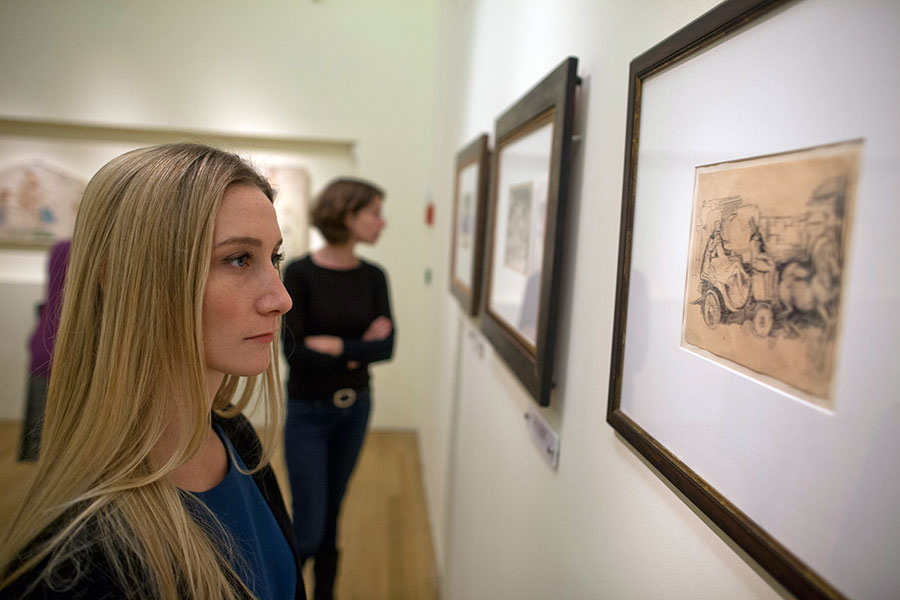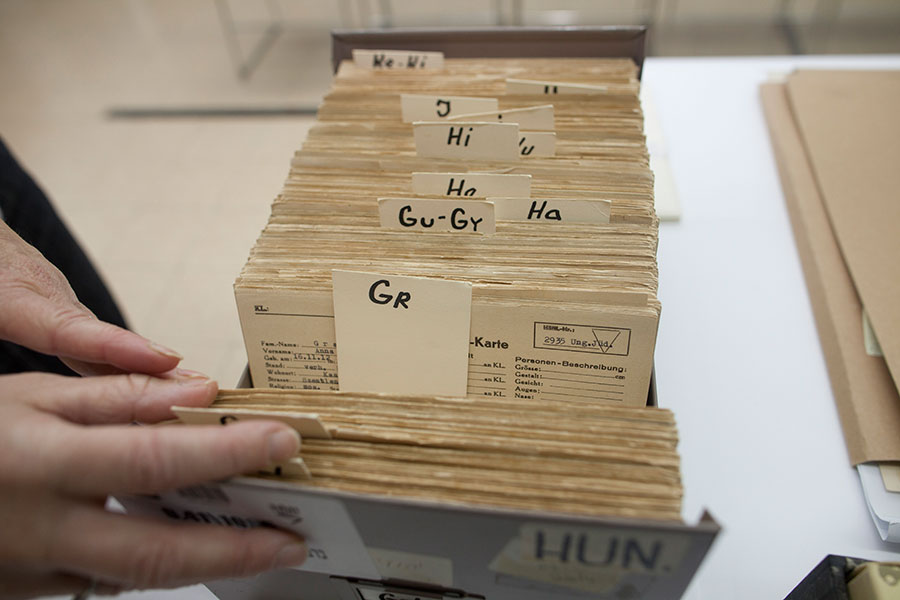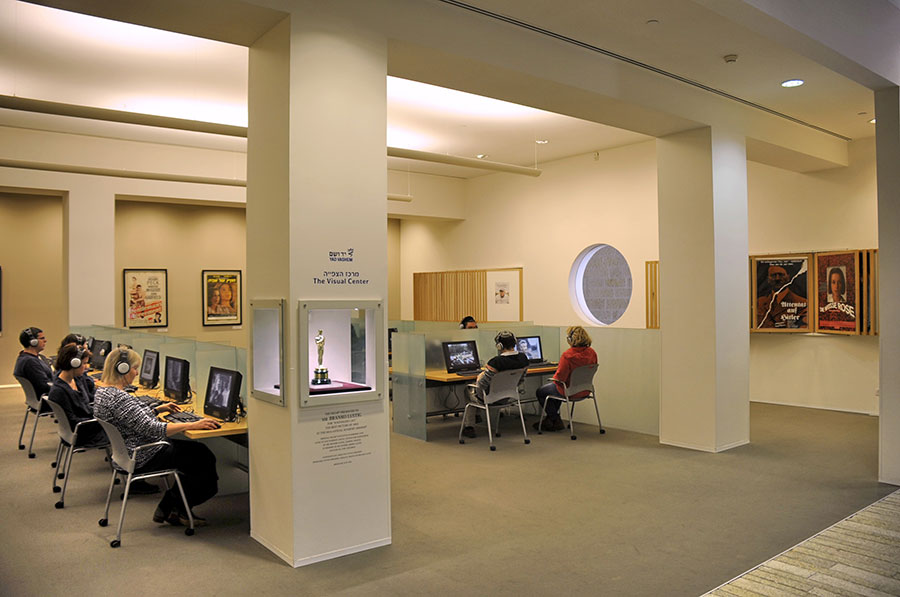Holocaust Education – The International School
More than 303,000 students from Israel and abroad, soldiers and officers of the IDF and other Israeli security forces participated in seminars and programs of the International School for Holocaust Studies and at the School’s branch in Givatayim.
- 110 seminars were held throughout the country for teachers and education students in Israel. Some 3,100 educators participated, among them 900 ultra-Orthodox educators.
- Some 12,700 Israeli educators attended 380 seminars at Yad Vashem and throughout Israel. Among these were some 4,400 ultra-Orthodox teachers.
- More than 1,100 ultra-Orthodox teachers participated in 3 special teacher-training days at Yad Vashem.
- More than 1,200 Israeli educators participated in the biennial Israeli Teachers' Conference.
- 87 extended seminars were conducted for some 1,570 educators from abroad. Of these, 5 were international youth leadership courses for 93 young leaders.
- The School held 87 teacher-training days for some 1,500 educators from abroad.
- 85 School staff members, together with School graduates around the world, participated in seminars, conferences and international forums and conducted educational activities in some 35 different countries worldwide.
- Some 7,300 teachers across the US received training as part of “Echoes and Reflections,” a joint multimedia program created by Yad Vashem, the ADL and the USC Shoah Foundation Institute. Some 31,200 educators and community leaders have been trained since the inception of the program.
- A new interactive learning center entitled "The War and the Holocaust: Thoughts on the Past and Future" was opened in the Jewish Museum and Tolerance Center in Moscow. The new center is based on the Learning Center located at Yad Vashem in Jerusalem.
- 6 films were added to the Holocaust Education Video Toolbox, a special educational platform developed by the Yad Vashem Virtual School.
- 30,000 individuals participated in a Massive Open Online Course (MOOC), entitled: "The Holocaust: An Introduction." The course was developed cooperatively by Yad Vashem and Tel Aviv University.
- More than 325 individuals participated in online courses conducted by the Virtual School in a variety of languages.
Research and Publications
- The International Institute for Holocaust Research granted the 5th annual Yad Vashem International Book Prize for Holocaust Research in memory of Abraham Meir Schwarzbaum, Holocaust survivor, and his family members murdered in the Holocaust. The 2015 recipient was Prof. Johann Chapoutot for his book, La loi du sang: Penser et agir en nazi. (The Law of Blood: Thinking and Acting the Nazi Way).
- The Research Institute held 4 international research workshops and 19 workshops for Holocaust scholars; the annual lecture of The John Najmann Chair of Holocaust Studies; and the annual lecture in memory of Prof. David Bankier, which included a central lecture open to the public and a doctoral workshop. In addition, the Institute held an international seminar in cooperation with Bar Ilan University to mark the retirement of Prof. Dan Michman.
- 13 senior researchers from Israel and abroad were hosted at Yad Vashem.
- The Institute granted 16 awards to Master's and Doctoral students studying in Israel, and 4 awards to Doctoral students who came to Yad Vashem from abroad.
- 33 new publications were released by Yad Vashem, including 17 research studies, 8 memoirs, 4 diaries and 4 volumes of Yad Vashem Studies.
Artworks and Artifacts
- The exhibition "Stars Without a Heaven: Children in the Holocaust " opened at the Exhibitions Pavilion.
- Yad Vashem's exhibition, "Art from the Holocaust: 100 Works from the Yad Vashem Collection" opened at the
German Historical Museum in Berlin. - 969 artifacts and 183 works of art were added to Yad Vashem’s collections. The Artifacts Collection now holds some
30,000 items and the Art Collection comprises some 9,500 pieces. - Traveling exhibitions were displayed in 12 countries worldwide. 41 versions of 14 exhibitions are now available in 13 languages.
Righteous Among the Nations
424 individuals were recognized as Righteous Among the Nations. At the end of 2015, more than 26,100 individuals had been awarded the title.
Visits and Commemorative Events
- Some 800,000 people visited Yad Vashem in 2015.
- Approximately one-third of Yad Vashem's visitors were guided by its professional guiding staff, among them more than 750 world leaders, dignitaries and official visitors.
- Some 80 events were held in conjunction with Holocaust survivor and next-generation organizations, including the Holocaust Remembrance Day and VE Day ceremonies.
- More than 260 memorial services were conducted.
- More than 2,000 general public inquiries were answered.
Internet Activity
- Close to 18 million visits from some 220 countries and territories were recorded on the Yad Vashem website.
- Close to 11 million video views have been recorded on Yad Vashem's YouTube channels in English, Hebrew, Spanish, Farsi, Russian, Arabic and German since their launch.
- During 2015 there were 15,000 new followers of Yad Vashem's Facebook page. The total number of followers to date is 116,000.
- More than 15,600 individuals now follow Yad Vashem on Twitter.
- As part of expanding its social media efforts, Yad Vashem opened an Instagram account during 2015. The account currently has more than 5,000 followers.
- Yad Vashem's website won the 2015 "People and Computers" Magazine's Special Category WebiAward.
Documentation, Photographs, Names, Testimonies and Films
- Some 10 million pages of Holocaust-era documentation were gathered by Yad Vashem. To date, Yad Vashem’s Archives, the largest and most comprehensive repository of its kind, contain some 190 million pages of documentation.
- Some 11 million pages of documentation were digitized – some 1 million pages of original Holocaust documentation and some 10 million pages of microfilmed documentation.
- Yad Vashem has identified more than two-thirds of the victims of the Holocaust. The Central Database of Shoah Victims’ Names now contains some 4.6 million names of Holocaust victims, all of which are accessible online. The source of more than half the total number of names in the Names Database is over 2.7 million Pages of Testimony, while the remainder is from archival lists and documents.
- The Shoah Victims' Names Recovery Project gathered some 89,000 names, some 22,000 of them from Pages of Testimony.
- Staff of the Gathering the Fragments campaign to rescue personal items from the Holocaust era collected some 27,500 items – documents, diaries, photographs, artifacts and artworks – from some 1,240 individuals in 22 centralized collection days and 277 home collections. Since the project was launched in April 2011, more than 171,000 items have been received from 8,240 individuals.
- Some 15,000 photographs were added to the Archives, among them some 1,700 to the Hall of Names. Yad Vashem currently houses some 465,000 photographs, including some 152,700 photographs attached to Pages of Testimony and housed in the Hall of Names.
- Some 1,100 new Holocaust survivor testimonies were filmed and recorded, aided by an outreach program enabling survivors to have their testimonies filmed at home. Some additional 1,400 testimonies recorded elsewhere were also acquired. The Archives currently house some 127,500 video, audio and written testimonies.
- This year, some 28,000 public inquiries for archival information were answered. Of these inquiries, some 8,000 members of the public were assisted in the Library and Archives Reading Room, and some 20,000 were written queries.
- Yad Vashem's Library, the most comprehensive collection of published material about the Holocaust, now holds over 157,000 titles in 54 languages.
- This year 450 new films, including classics from the past as well as new films were added to the Visual Center, and more than 400 from a variety of genres were catalogued. The Center’s searchable online Film Catalogue now includes close to 10,000 titles, all of them easily accessible on Yad Vashem's website. Currently more than two-thirds of these titles, over 7,000 films, are available for viewing at the Center.
- In addition to thousands of visitors to the Visual Center, more than 70 groups of students, teachers and film directors took part in Holocaust-related film programs, including lectures on film and the Holocaust. 8 special screenings of films for the general public were held at commemorative events and film festivals in Israel and around the world and over 1,000 public inquiries for research and information regarding the Holocaust and cinema were answered.
- Croatian film producer and Holocaust survivor Branko Lustig donated to Yad Vashem the Oscar awarded to him by the Academy of Motion Picture Arts and Sciences for Schindler's List. The Oscar© stauette is on display in the Visual Center.
- The 10th annual Avner Shalev Yad Vashem Chairman’s Award was awarded to British director David Evans, for his film My Nazi Legacy : What our Fathers Did. The annual award is presented for artistic achievement in a Holocaust-related film.




